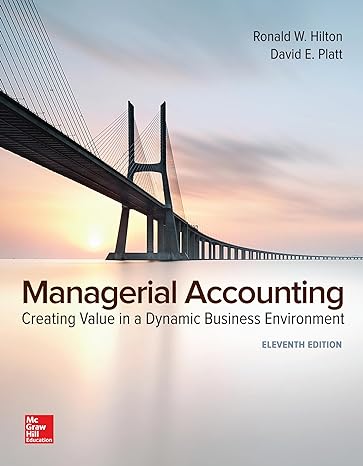Valdosta Chemical Company manufactures two industrial chemical products in a joint process. In May, 10,000 gallons of
Question:
Valdosta Chemical Company manufactures two industrial chemical products in a joint process. In May, 10,000 gallons of input costing $60,000 were processed at a cost of $150,000. The joint process resulted in 8,000 pounds of Resoline and 2,000 pounds of Krypto. Resoline sells for $25 per pound, and Krypto sells for $50 per pound. Management generally processes each of these chemicals further in separable processes to produce more refined chemical products. Resoline is processed separately at a cost of $5 per pound. The resulting product, Resolite, sells for $35 per pound. Krypto is processed separately at a cost of $15 per pound. The resulting product, Kryptite, sells for $95 per pound.
Required:
1. Draw a diagram similar to Exhibit 17–8 to depict Valdosta Chemical Company’s joint production process.
2. Allocate the company’s joint production costs for May using
a. The physical-units method.
b. The relative-sales-value method.
c. The net-realizable-value method.
3. Valdosta’s management is considering an opportunity to process Kryptite further into a new product called Omega. The separable processing will cost $40 per pound. Packaging costs for Omega are projected to be $6 per pound, and the anticipated sales price is $130 per pound. Should Kryptite be processed further into Omega? Why?
4. In answering requirement (3), did you use your joint cost allocation from requirement (2)? If so, how did you use it?
5. Build a spreadsheet: Construct an Excel spreadsheet to solve requirements (2) and (3) above.
Show how the solution will change if the following information changes: the joint cost is
$245,000, and the sales price of Omega is $125 per pound.
Step by Step Answer:

Managerial Accounting Creating Value In A Dynamic Business Environment
ISBN: 9781259569562
11th Edition
Authors: Ronald W.Helton, David E. Platt




